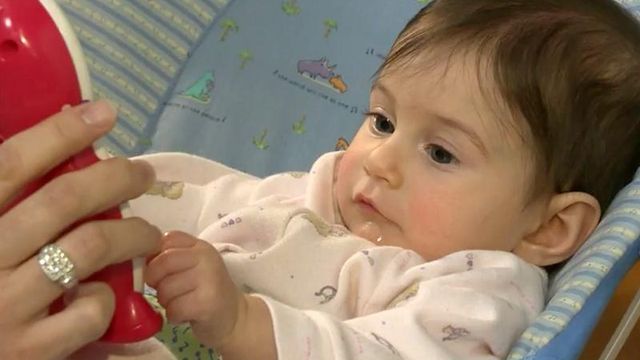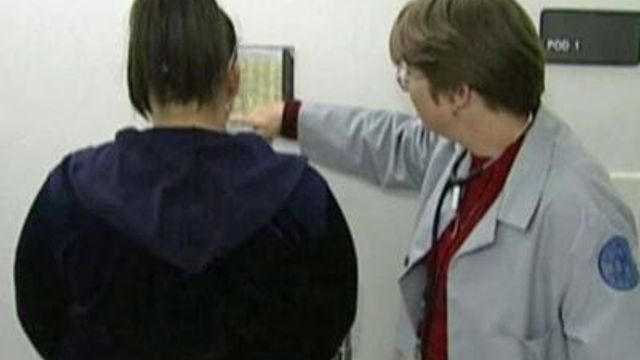New research creates formula to assess obesity risk in infants
Childhood obesity rates are a big concern in this country - with good reason. More than a third of children and teens are overweight or obese, and those numbers continue to steadily climb.
Posted — UpdatedTo help assess a newborn's chances of becoming obese in childhood, researchers in England have created a simple formula that combines family history and day-of-birth statistics. The formula isn't foolproof, but it indicates risk factors and can help families better care for children who may be at risk.
Birth weight is a major predictor of whether a baby becomes obese later in life, but the formula also includes the body mass index of the parents, the number of people in the household, the mother's professional status and whether or not she smoked during pregnancy.
"That calculation would have an 80 percent chance of being right, so it really does a good job," Dr. Jonathan Fanaroff, of the Rainbow Babies and Children's Hospital, said. "It is an important tool."
Doctors say the formula can also help parents with early prevention, as it's harder for children to lose weight once they have gained it.
"Maybe this calculator will get some families, who might otherwise not take a healthy lifestyle seriously, to take it more seriously," Fanaroff said.
Traci Glazner has been trying to help her baby Faye get started on the right foot by breastfeeding exclusively. Faye was 19½ inches and 6 pounds, 3 ounces when she was born.
"I nurse Faye 100 percent," Glazner said. "She hasn't started any solid foods yet, so all she's had is breast milk."
As Faye gets older, Glazner said she plans to give her well-balanced meals and keep her active.
The researchers did their original study on 4,000 children from Finland, but said the formula also proved to be accurate in studies in United States and Italy.
• Credits
Copyright 2024 by Capitol Broadcasting Company. All rights reserved. This material may not be published, broadcast, rewritten or redistributed.






